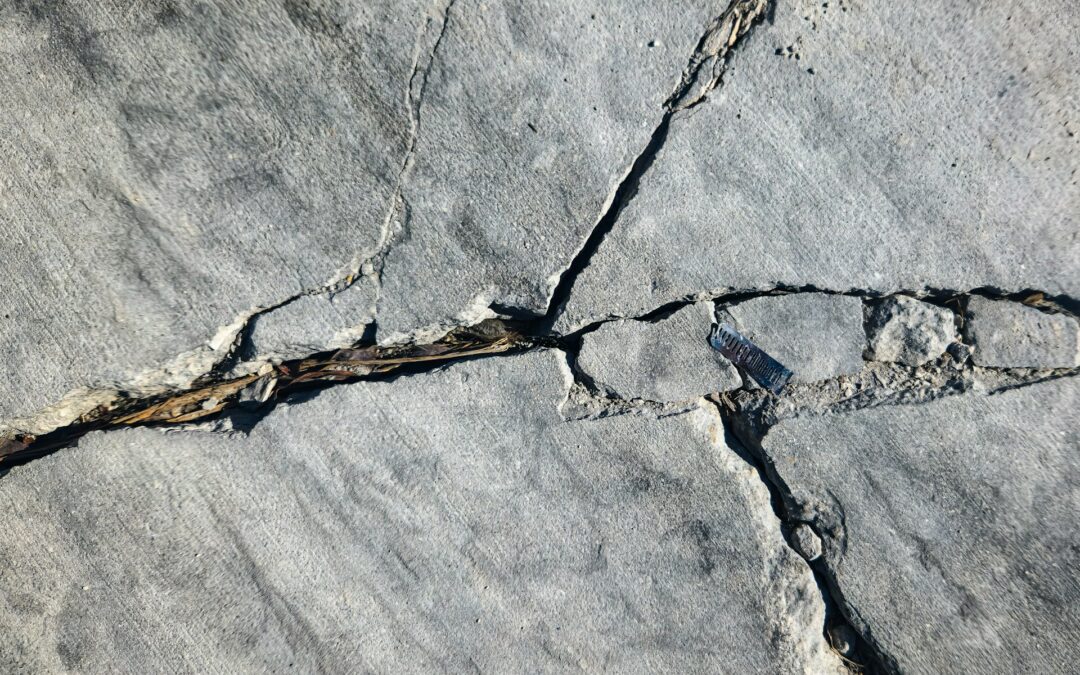Foundation cracks are a common worry for homeowners. They can appear in various forms and might signal different underlying issues. Spotting these cracks early and understanding what they mean is crucial to maintaining the safety and structure of your home.
Taking action quickly is key. By learning about different types of cracks and how to address them, you can keep your foundation strong and your home’s value intact. Regular maintenance and preventive steps go a long way in avoiding future foundation troubles and ensuring a safe and sturdy home.
Identifying Types of Foundation Cracks
Foundation cracks come in various shapes and sizes, each telling a story about your home’s structure. Common types include vertical, horizontal, and diagonal cracks. Vertical cracks are often seen in many homes and can happen due to concrete settling. These types usually pose less threat and can be repaired easily if caught early. However, horizontal cracks might indicate severe pressure from soil around your foundation. These cracks can signify significant structural concerns, requiring keen attention.
You should watch out for visual signs to determine the seriousness of the situation. Small, fine lines often settle cracks, especially in new homes. Look for jagged cracks that widen over time or where different parts of the foundation shift apart. These are red flags that merit further evaluation. Check regularly to catch these signs early and prevent worsening.
Assessing the severity of cracks involves a close inspection to determine their size, direction, and activity level. Small hairline cracks can be considered minor, but cracks more expansive than a quarter inch or spanning multiple foundation sections need prompt attention. Use a ruler to measure crack width, and mark endpoints to see if they grow longer. Regular checks are essential for managing potential issues before they escalate, ensuring peace of mind and a safer home.
DIY Crack Repair Methods
With the right tools and materials, tackling minor foundation cracks yourself can be straightforward. You’ll need a few common supplies, including a chisel, wire brush, concrete patching compound, and a caulking gun. A simple epoxy injection kit can also be useful for small cracks, filling them effectively and preventing water intrusion.
For basic repairs, follow these steps to handle minor issues:
1. Prepare the Crack: Use a chisel and wire brush to clean out the crack, removing loose debris. This ensures better adhesion for the repair material.
2. Mix the Repair Compound: Follow the instructions on your chosen patching compound to prepare it for application.
3. Apply the Compound: Using a putty knife, firmly press the compound into the crack, smoothing it out to blend with the surrounding surface.
4. Finish and Inspect: Allow the patch to dry completely, then inspect it for missed spots or issues.
Safety is important while working on repairs. Wear eye protection and gloves to safeguard against dust and chemicals. Work in a well-ventilated area to avoid inhaling fumes. Keep children and pets away from the worksite, ensuring they stay safe and out of harm’s way. Taking these precautions can help you fix minor cracks effectively while maintaining peace of mind.
When to Involve Professionals
Knowing when to call in professionals is crucial for maintaining the integrity of your foundation. Some indicators point to a bigger issue that DIY solutions can’t address. Large horizontal cracks, those wider than a quarter inch, or cracks that seem to widen over time are signs you need expert help. Any visible shifting in the foundation or signs of settling needs professional evaluation to prevent further damage.
Ignoring large cracks poses significant dangers. They can grow over time and lead to severe structural problems, like misaligned doors or windows, and ultimately compromise the safety of your home. Foundation issues left unchecked can result in costly repairs down the road.
The benefits of expert evaluation include accurate diagnosis and appropriate solutions tailored to your home’s needs. Professionals can assess the cause of the issues and offer long-term fixes that a DIY approach might miss. Their expertise ensures that all the underlying problems are addressed, preserving your home’s safety and value for years.
Preventative Steps to Avoid Future Cracks
Taking proactive steps can help prevent future foundation cracks. Proper drainage and moisture control around your home are key. Ensure that gutters and downspouts direct water away from your foundation. Grading your yard so the ground slopes away from your home reduces the risk of water pooling near the foundation.
Regular maintenance routines keep minor issues from turning into big problems. Inspect your foundation at least twice a year, checking for new cracks or signs of moisture. Address any minor issues quickly to prevent them from escalating.
Strengthening your foundation’s integrity involves reinforcing it where possible. You can add sealants to small cracks to prevent water from seeping in, which can cause erosion. Consider installing rain gutters and downspouts as part of your maintenance regimen. Ensuring a stable environment for your foundation will go a long way in maintaining its health and longevity.
Conclusion
Understanding foundation cracks and how to address them is essential for every homeowner. Identifying which cracks are minor and require professional help ensures your home’s safety and minimizes repair costs. Regular maintenance and timely repairs keep your foundation in great shape.
Preventative measures such as effective water drainage and routine inspections play a huge role in avoiding future issues. You safeguard your investment and peace of mind by monitoring your home’s foundation and taking prompt action when needed.
If you’re dealing with significant foundation cracks or want to prevent future ones, Lift-Texas Construction is here to help. Our foundation contractors provide comprehensive evaluations and top-notch repair solutions tailored to your home’s needs. Partner with us to keep your foundation strong and secure for years.

